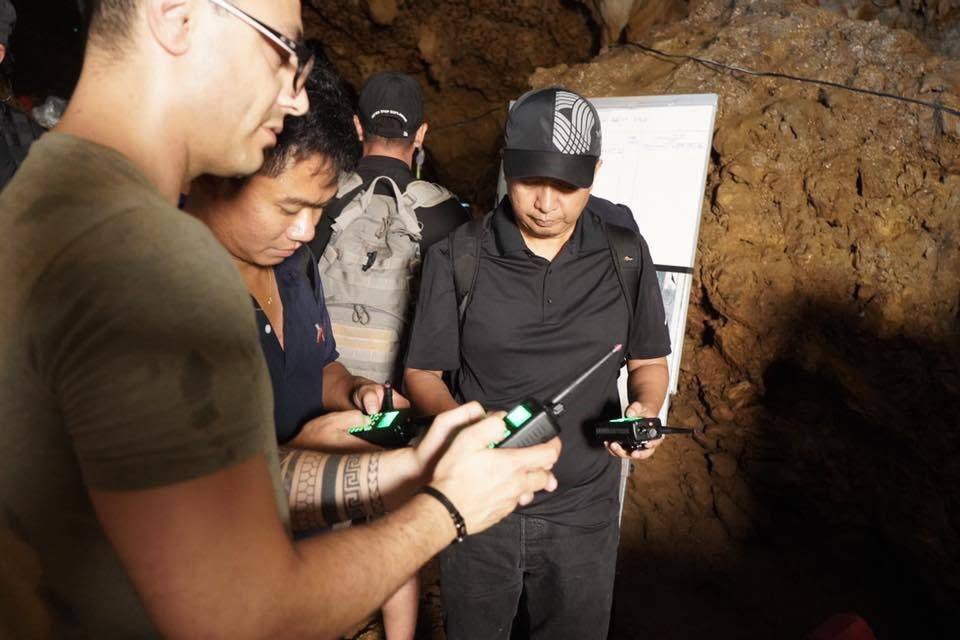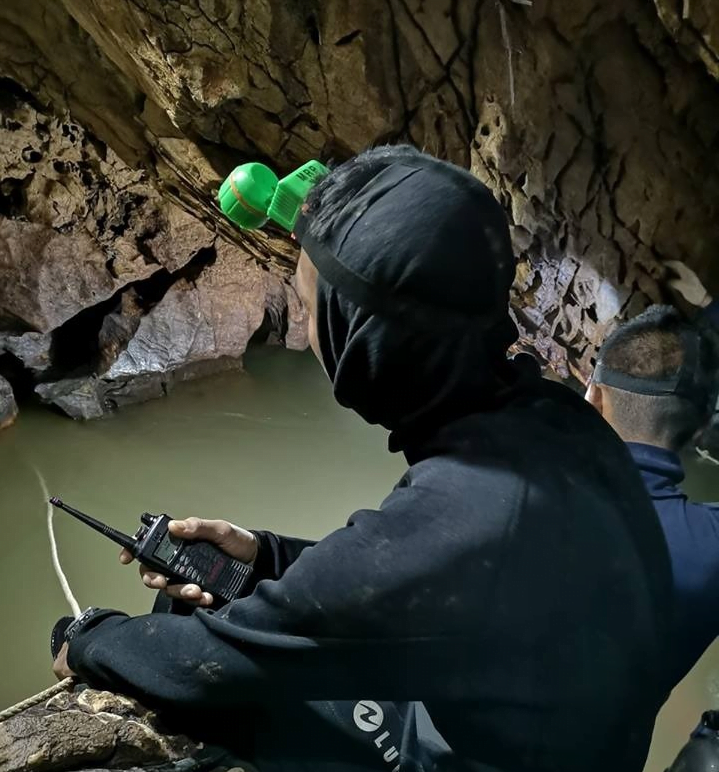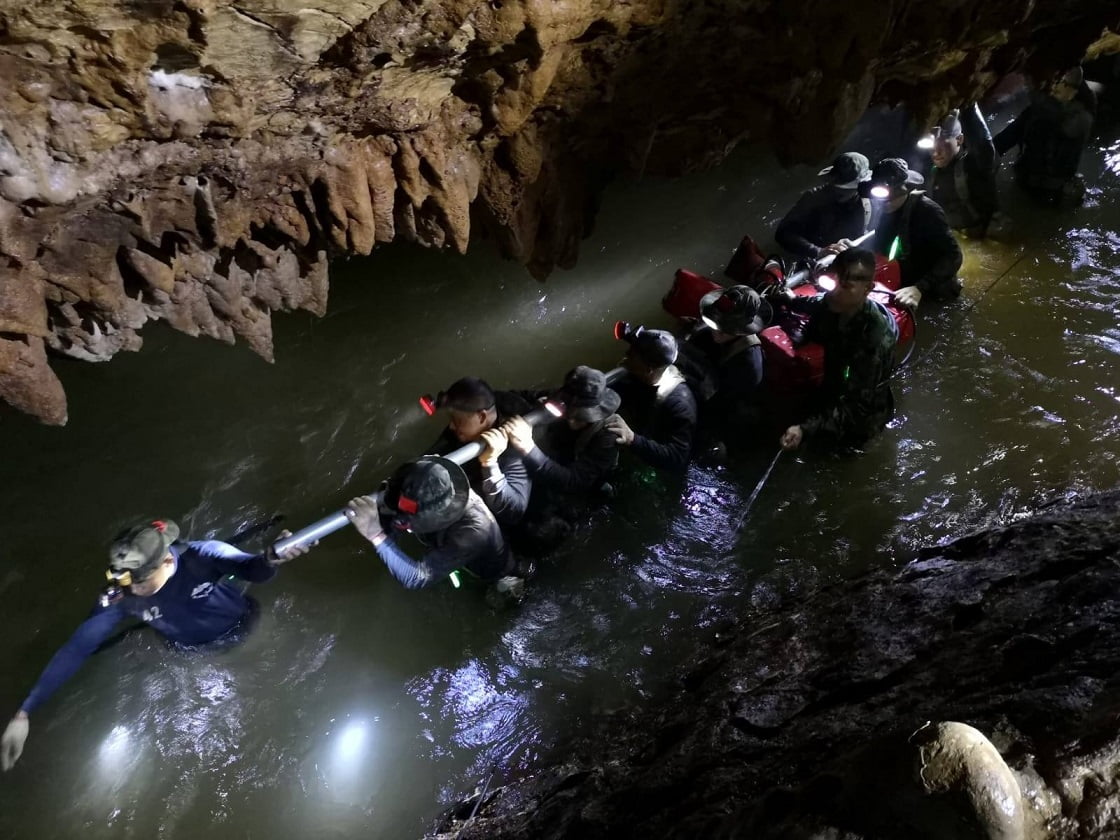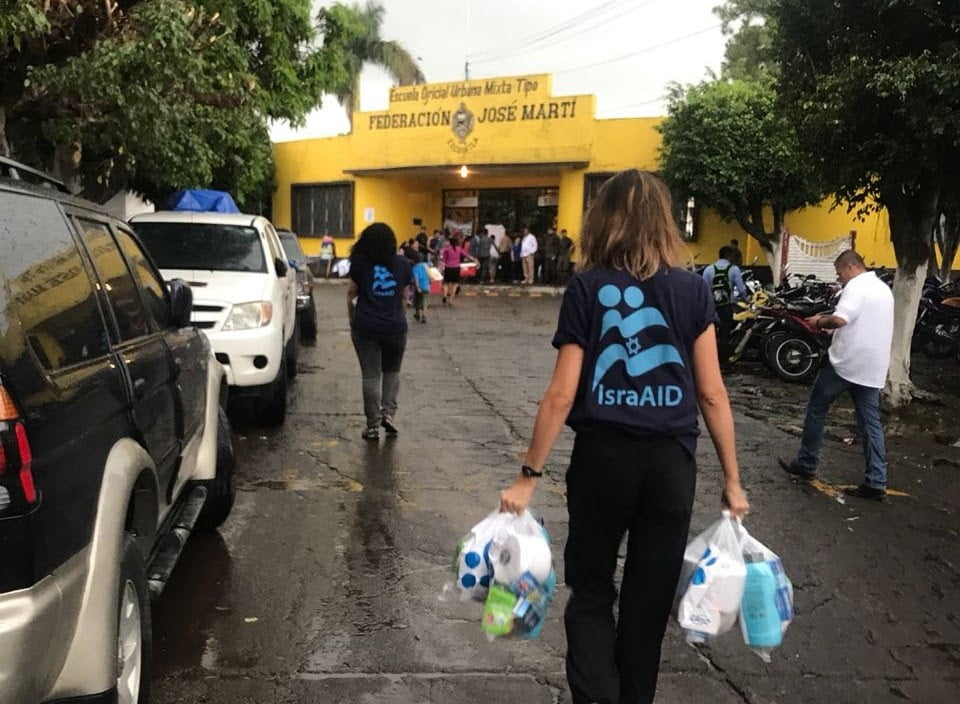Israeli rescuers and cutting-edge Israeli tech have been part of a major international operation to locate a boys’ soccer team missing since June 23 in Thailand. On Monday, the team of 12 boys, ages 11 to 16, and their 25-year old coach were found alive, trapped over the past nine days in a partially flooded cave in the northern region of Chiang Rai.
The mission to extract the team from the cave is underway. Thailand’s military said on Tuesday that it could take months to bring them to the surface as the region’s rainy season begins and water levels rise. Authorities were preparing long-term food supplies and were considering scuba diving lessons for the trapped team, according to news reports.
The missing group was discovered by naval special forces on Monday, Chiang Rai governor Narongsak Osottanakorn said, as well as a British diving team. Heavy rains flooded key passageways to the areas the boys were believed to be trapped and rescue efforts have been marred by inclement weather and dark tunnels that hit the Tham Luang Nang Non cave after the boys disappeared, following their soccer game over a week ago.
Shortly after their disappearance, Thai emergency services began search efforts and were soon joined by international experts from China, Australia, the UK, Laos, Myanmar, the US, and Israel. More than 1,000 people have been involved in the rescue operation.

Rescue teams are now entering their ninth day in the search for a missing Thai youth soccer team and their 25-year old coach. Courtesy
The Israeli rescuers, among the first to join the scene just two days after the boys disappeared, deployed Israeli-developed, state-of-the-art, search-and-rescue tech to aid the efforts.
Israeli company Maxtech Networks, a supplier of emergency communication equipment, sent emergency radios and other innovative technologies to aid the rescuers, including their patented Max-Mesh mobile professional radio, a device that enables mission-critical communication of professional mobile radios through virtual infrastructure, even when no physical infrastructure is available.
Maxtech CEO and founder Uzi Hanuni tells NoCamels that he was so moved to help in the search for the missing group that the company provided the devices to the search parties as soon as it could.
Yuval Zalmanov, currently a senior software engineer at Maxtech, also voluntarily flew out to Thailand last Monday.
“We as a company decided to contribute devices to save those kids,” Hanuni says, “It’s very simple. When there are children at risk, you don’t think twice coming from a place like Israel. It’s in our nature.”
After a 12-hour flight that was funded by Asaf Zmirly, an Israeli national who lives in Thailand and owns a rescue company, Zalmanov joined him in the mission. He took radios and computers with him to give out to the rescue teams on the ground and taught them how to use it, but was also on hand to provide technical support. Hanuni says he is in contact with Zalmanov regularly.
Hanuni said his team was the only one to introduce working technology into the rescue efforts, as the complicated nature of the area – about 10 kilometers large – is not conducive to communication.
“We understood that the only way for those rescue forces to enter this cave is using resilient and good communication that can survive this tough environment,” he also an Israeli TV station in an interview Sunday.
The group now needs to be extracted from the cave safely, with water continuing to rise and mud blocking access. The current plan is to get medical treatment and food to the party.
Sign up for our free weekly newsletter
Subscribe“We will drain all water out from the cave then we will take all 13 people out of the cave. We are now planning how to send nurse and doctor inside the cave to check their health and movement. We will work all night,” Osottanakorn said.
Hanuni says he was heartened to hear the group was located. “I am very excited by this amazing success combining technology and life-saving. It has worked.”
Revolutionary max mesh tech
The Max mesh professional mobile radio, which could easily be mistaken for a walkie-talkie, is much more complex than the average portable, hand-held, two-way radio transceiver. It uses a sophisticated software algorithm developed by Maxtech over the past 12 years, with technology that enables the user to talk and use the device as a relay simultaneously, beyond typical network reach. (Relay technology is when the electrical device is activated by a current or signal in one circuit that opens or closes another circuit, they can talk into the system and hear sounds or noises in the surrounding areas at the same time.)
The tech is able to provide safe communication in voice and video without any line of sight or any physical infrastructure. The range, Hanuni tells NoCamels, is not endless, but it is at least a few kilometers deep.
Hanuni says the tech has already been used by Israel, Italy, and India, in the aerospace, defense and security spheres.
Israel’s search-and-rescue efforts
Israel has long been at the forefront of cutting-edge search-and-rescue technology and its responders are among the first to have boots on the ground when disasters occur.
In recent years, Israeli organizations like the Israeli Defense Forces (IDF), Magen David Adom, and IsraAid have figured prominently in relief efforts following natural disasters worldwide, including the earthquakes in Haiti in 2010, Nepal in 2015, and Mexico last fall as well as the Caribbean hurricanes last summer. Last month, Israel sent an aid mission to Guatemala after a deadly volcano eruption.
Israeli medical responders and rescue teams have also come to depend on groundbreaking tech solutions to help them in their relief efforts, using solutions like high-tech bandages, robots, and drones to locate victims, or sensors that provide visual aid in places that cannot be seen by the naked eye.
Examples of Israeli entrepreneurs and startups that are behind some of is life-saving, revolutionary tech include the Israel-based Beeper Communications, which is working alongside the US-based Mantaro Networks Inc. using funds from the American-Israeli BIRD foundation to develop robots that will serve alongside human responders and Vayyar 3D sensor technology, which can visually display and detect in 3D what lies behind barriers. This technology has been used to recognize early cancer tumors and find victims in search-and-rescue operations.
Related posts

Editors’ & Readers’ Choice: 10 Favorite NoCamels Articles

Forward Facing: What Does The Future Hold For Israeli High-Tech?

Impact Innovation: Israeli Startups That Could Shape Our Future






Facebook comments